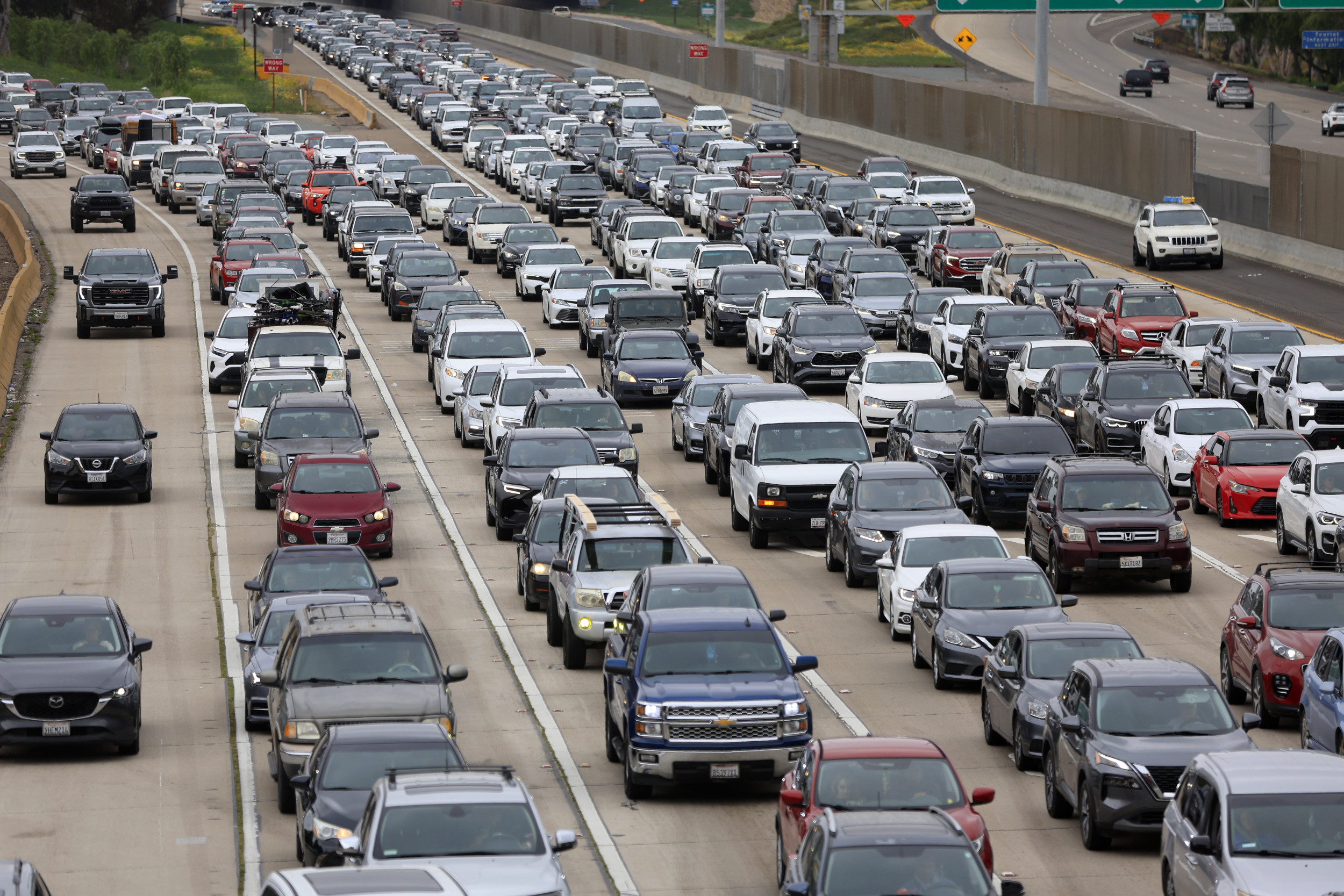
Car insurance rates across the U.S. finally began to dip in recent months after years of rising due to higher medical costs, vehicle parts, legal fees and labor shortages.
In the first half of the year, rates remained steady nationwide and fell in 27 states, according to data by Insurify.
However, experts say rates are likely to surge again as a result of the Trump administration’s economic policies.
How High Is Car Insurance Right Now?
The cost of car insurance has shot up for millions of American drivers in recent years because of a combination of reasons that has caused carriers to face higher expenses.
The number of legal cases linked to car incidents has risen in the country in recent years, and litigation costs have increased. According to data by reinsurance and insurance company Swiss Re, car insurance liability claims increased by 57 percent in the U.S. over the past decade.
Kevin Carter/Getty Images
Repair costs have also surged as vehicles on the nation’s roads have gotten more sophisticated, putting pressure on insurers to increase their rates. Medical bills have also gotten more expensive.
New cars are also generally more expensive than they used to be a few decades ago. They are bigger vehicles packed with new, delicate technology, which comes at a higher price tag.
As a result of all these increases, the cost of car insurance has risen by 56 percent since January 2020, according to data by the U.S. Bureau of Labor Statistics. In the 12 months between April 2024 and April 2025 alone, it jumped by 6 percent.
According to Insurify, car insurance premiums are beginning to dip across the country. In June, the average cost of car insurance fell in 27 states year-over-year, remained flat in three and increased in 19 and Washington, D.C.
At the national level, the average full-coverage car insurance premium nationwide fell by 1 percent compared to a year earlier, with an annual cost of $2,310 as of June.
This decline is unlikely to continue, according to experts, as President Donald Trump‘s tariffs are likely to push them up.
Why Would Rates Rise Again?
Insurify data scientists analyzed the company’s database of more than 97 million insurance quotes and estimated that the cost of car insurance would increase by 4 percent by the end of the year, bringing the nationwide average annual cost to $2,435.
This is taking into consideration the agreements announced by the Trump administration last week, which reduced tariffs on imports of auto parts from Japan, South Korea and the European Union from 25 percent to 15 percent. These are some of the largest exporters of auto parts to the U.S.
But car insurance premiums could increase by up to 7 percent if prolonged tariffs result in significant insurer losses, pushing the average premium to $2,502, according to Insurify. This is because tariffs on auto parts bring repair costs even higher.
Individual states may face even steeper increases when considering the effects of Trump’s tariffs.
In Florida and New York, according to Insurify, rates could jump by 10 percent in the second half of the year after decreasing in the first half. Drivers in these states would face some of the highest bills in the country, with projected costs nearing $4,000.
In Maryland, which Insurify data said was already the most expensive state for car insurance, drivers could see the average annual cost for full coverage reach $4,400 with further tariff-driven rate increases.
